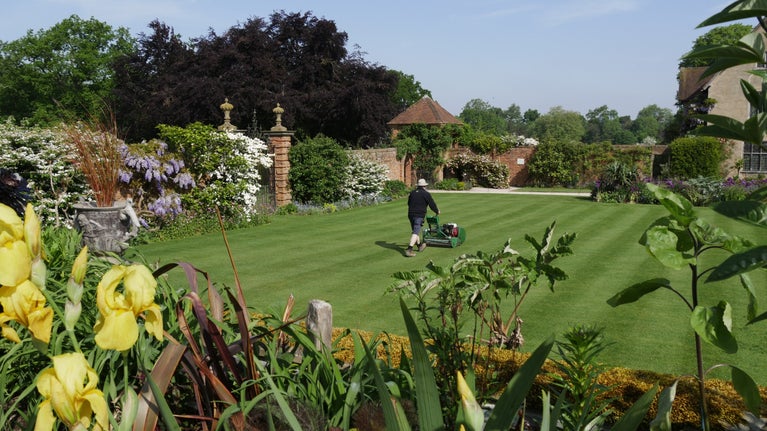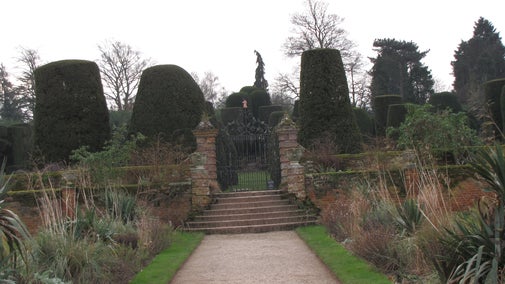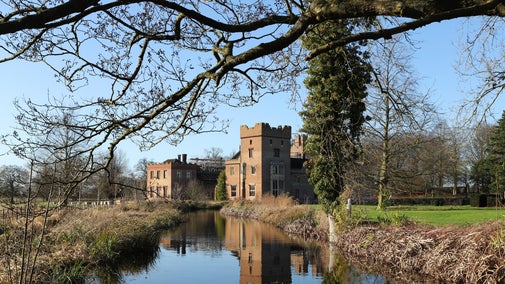
Donate
Everyone needs nature, now more than ever. Donate today and you could help people and nature to thrive at the places we care for.

Packwood’s contemporary ‘mingled’ style garden with herbaceous borders, Yew Garden and productive kitchen garden creates a variety of different spaces, each presenting the outdoor team with differing challenges, gardening techniques and management approaches. Find out more about how the team look after these spaces and the larger conservation projects that have taken place.
This is a unique piece of horticultural history, so looking after it presents quite a challenge to the garden team. General maintenance includes regular mowing of the lawn area, as well as annual trimming of the box hedging and the yew trees beginning around August time. This is hugely labour intensive and requires significant skill to keep the sharp outlines of the yew as crisp as possible.
In addition to the general maintenance, the team are also completing a rejuvenation programme to try and conserve this important part of Packwood.
Discover more about the Yew Garden, its history and the work being completed to protect it.

The yellow border and double borders within the Carolean garden represent the team’s contemporary version of the ‘mingled style’ of planting. They are planted in small groups or using single plants repeatedly. The visual impact is emphasised by the contrasts in flower colour and the rhythm is created by the way the plants are arranged.
A ‘matrix’ is used to help keep the layout and rhythm of planting consistent within each section of the borders, without being monotonous and repeating plants at too regular an interval. This gives the team some flexibility to which plants are used, however architectural plants are often repeated to give structure and create a towering effect.
This style of planting is hugely labour intensive and requires horticultural skill from the garden team. They lift, divide and replant each year, and plants are supported through ‘pea sticking’ while also making sure they have a constant supply of back up plants available in the nursery.
When the team restored this space, the aim was to recreate what was once a vital part of the Fetherston family’s self-sufficient home at Packwood in the 1700s. Growing vegetables involves a lot of maintenance so the lockdowns and furloughing of staff in 2020 presented real challenges to their work.
In October 2020 work to restore the plots to their former glory began with significant clearing work and digging out of perennial weeds which had covered the once productive soil. The plots were then covered with a permeable membrane to suppress the weeds while still allowing air and moisture through.
The spring and summer of 2021 saw the team working hard to slowly bring the kitchen garden back into a productive space whilst still allowing wildlife to flourish. The café at Packwood is now able to once again take advantage of the homegrown produce.
There are an abundance of meadows surrounding Packwood. One of the oldest continuously maintained is over 300 years old and located to the south-east and south-west of Packwood Lane in what is known as the Outer Court.
In order the maintain the meadows they are cut in the middle of July and all the hay is removed and composted. The garden team ‘top’ the meadows again at the end of August and give them their final cut in late October. This is done to reduce the fertility of the soil ensuring as little nitrogen feeds back underground. Usually, the poorer the soil the greater opportunity for diversity of wildflowers.
In sensitive areas close to the garden, you may find metal hoop-like barriers and some interpretation asking you to be careful to keep to the grass paths at their edges. These are our native flowers and can sometimes be innocently overlooked in winter when the meadows are short, and the footfall creates compaction, so the team try to protect them. Their importance has been registered with the Warwickshire Wildlife Association who survey the meadows to discover more about their flora and insect richness.
Alongside the daily, seasonal and annual management of the outdoor spaces at Packwood, larger conservation projects have also taken place to help protect and restore the landscape at Packwood.
With your ongoing support, we're able to continue our vital conservation work. Thank you for helping to protect these special places.

Everyone needs nature, now more than ever. Donate today and you could help people and nature to thrive at the places we care for.
Find out more about Packwood’s mysterious Yew Garden, one of Britain’s major topiary gardens, and the work taking place to save it from decline.

Find out more about what it takes to care for and conserve the collection and over 400 years of history at Packwood.

Explore Packwood’s garden and its seasonal delights. Flamboyant flower borders in a ‘mingled’ style, magnificent yew trees and a bountiful kitchen garden all wait to be discovered.

Enjoy a range of walking routes on the estate surrounding Packwood, taking in fields, woodland and canals, and discover more about the flora and fauna you might see along the way.

From winding paths through woodland to wide open spaces, Packwood is the perfect place for a family day out in the great outdoors.

Read about our strategy, which focuses on restoring nature, ending unequal access and inspiring more people.

We believe that nature, beauty and history are for everyone. That’s why we’re supporting wildlife, protecting historic sites and more. Find out about our work.
